Flat Iron Bordelaise with Braised Roots
I got my December Saveur magazine in the mail the other day, and the cover trumpeted both filet mignon, and "The Secrets of French Sauces". Sauces are my favorite culinary field. I thought to myself: "Self: check out the sauces article. Maybe it'll add some info to that book by Peterson you keep reading." Lo and behold, the article was written by James Peterson himself. I urge everyone interested in sauces to check out this issue. He's a modest fellow -- he refers to his highly acclaimed book (and one of my top-3 cooking must-have books) Sauces as "A book I wrote in 1991". That "book" is an amazing history, from the salty/fish garum sauces of Rome, to the basic mother sauces of French cuisine, to instructions to develop an almost infinite variety of flavor based on those mother sauces, and beyond. In short, Peterson is one of my culinary idols, and I was pleased to see Saveur conned him into writing the centerpiece of the December issue, without once referring to the holiday season.
The thick, rich, very red sauce on the cover is a bordelaise, so named for the Bordeaux region of France, which is probably the most well known red wine producing region in the world. Peterson provides a classic recipe for bordelaise, over filet mignon. I had to make it, of course. Peterson has always been a tinkerer, however, and I've jazzed up his recipe by using flat iron instead of fillet, for some extra beefy flavor, with a few bordelaise substitutions as well. I served the steak and sauce over a braised root vegetable foundation, as a nod to the season.
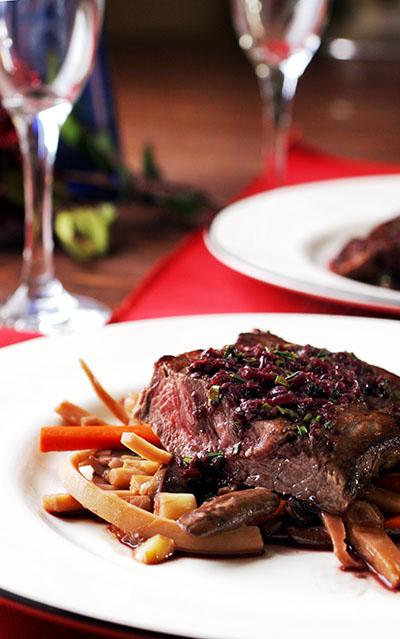
The root vegetable braise would take a lot longer than the rest of the meal, so I started that first. Parsnips, carrots, criminis, a leek, a shallot, red wine, red wine vinegar, brown veal (or beef) stock, garlic cloves, and some thyme.
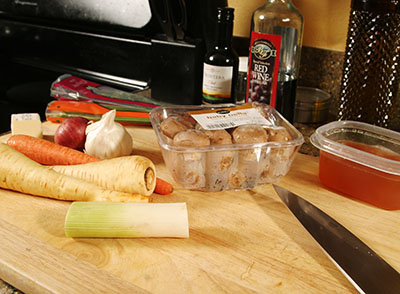
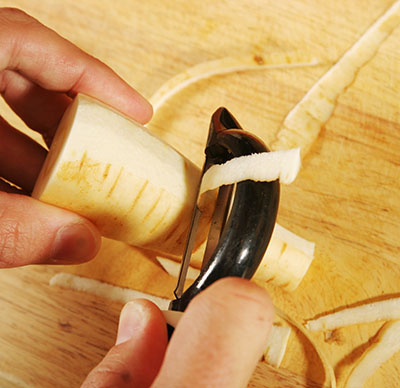
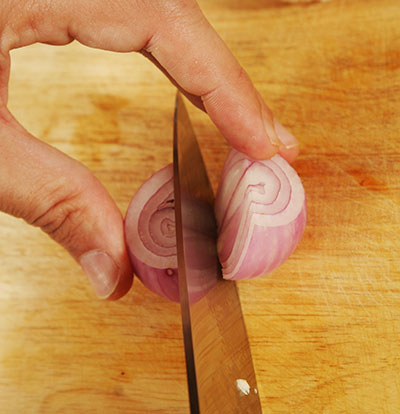
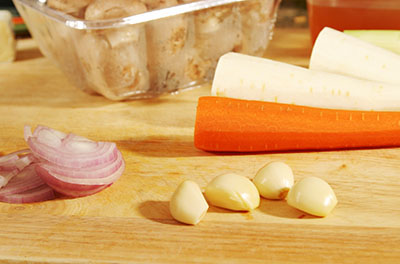

I sliced the leeks, julienned the carrots and parsnips, sliced the mushrooms, and quartered the garlic. Basically, breaking down each ingredient into a form that would absorb cooking liquid well when slowly heated.
I set a good sized pot over medium-high, then sizzled up a couple tablespoons of butter. The vegetables did a quick saute in the hot fat before the liquid.


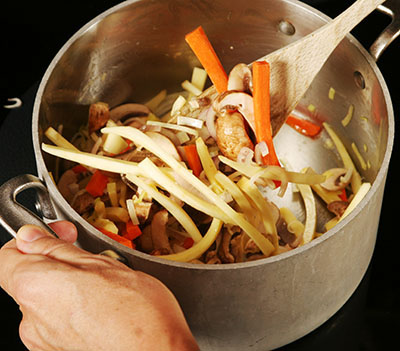
Then, I poured in a cup of brown veal stock, a half cup of red wine (a Chilean CabSav/Merlot), a few tablespoons of red wine vinegar, and a few sprigs of thyme.

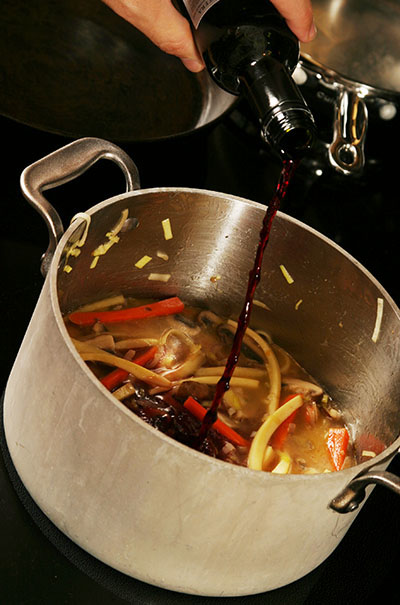
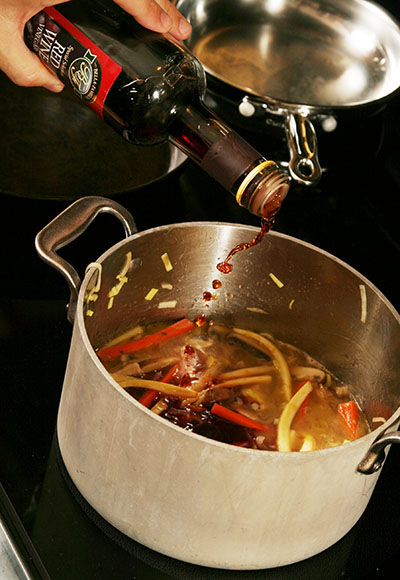
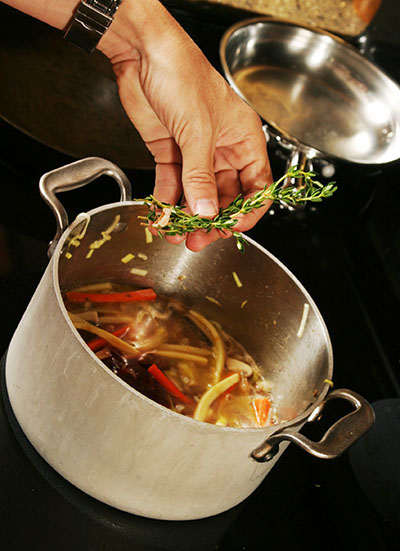
I set the vegetables on a medium simmer in the background to absorb the liquid and cook through. Probably 45 minutes or so in total.
With the vegetables timing away in the background, I started the bordelaise. A cup of red wine (the Chilean CabSav/Merlot), was heated with a large shallot and another couple sprigs of thyme. I did a quick flambée to burn off some alcohol and create some caramelized flavor, then the sauce was reduced to about a tablespoon.

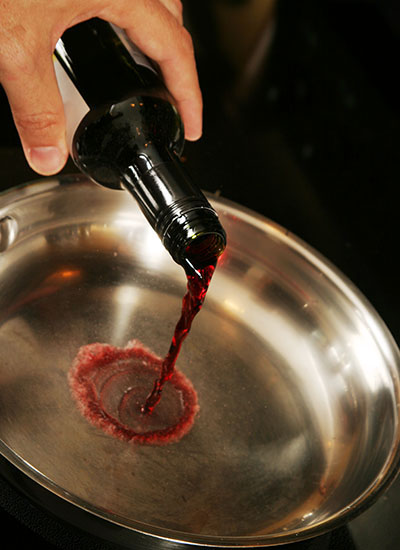

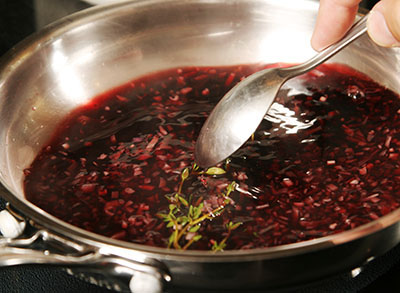
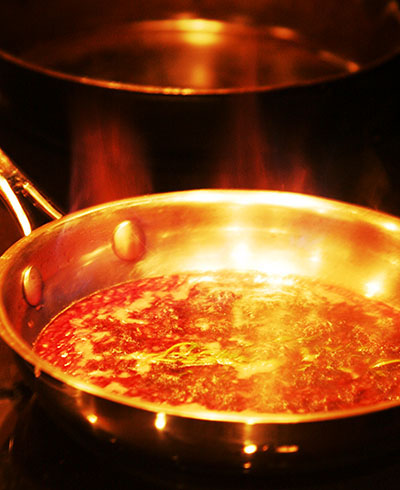
Look how reduced this gets. Can you imagine the flavors absorbed from that dark red wine, when all the alcohol and water are evaporated out of it? This is serious, absolute, pure, concentrated flavor:

Then, I added about three tablespoons of frozen demi-glace, while removing the thyme sprig. Once warmed, the sauce is put off to the side.


The demi-glace (a beef or veal stock reduced to the point that it's almost a savory jello) is an integral component of bordelaise, and Peterson gives his recipe for making it. I have made it several times, and each time is a three day epic of stock creation, skimming, straining, and reduction. Personally, I think it's worth it, and as I'm almost out of my stash of demi-glace, there will almost certainly be a future post about it. If demi-glace is unavailable, it is possible to buy it in gourmet stores, and if that's not possible or practical, many grocery stores sell "beef base". The gelatinous base is better than bullion cubes, and yet, it's still grittier and saltier than any homemade demi-glace. Beef base will do, though, if you mind the sodium in the rest of the recipe.
For the steak, I took a one-pound flat iron, salted generously (here's where you watch yourself if you're using beef base), heated a cast-iron skillet to medium-high, then added some olive oil almost to the smoke-point. I seared the steak on one side, then threw the steak and skillet into a preheated 500 degree oven (yes, 500F degrees. As hot as you can get.)
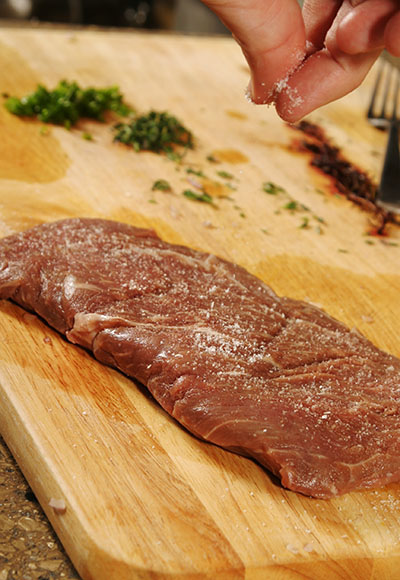
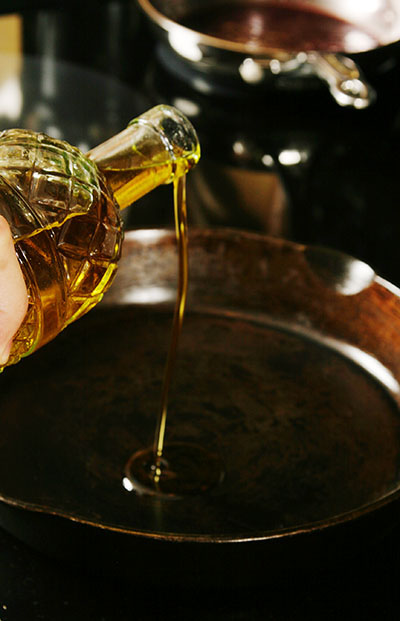
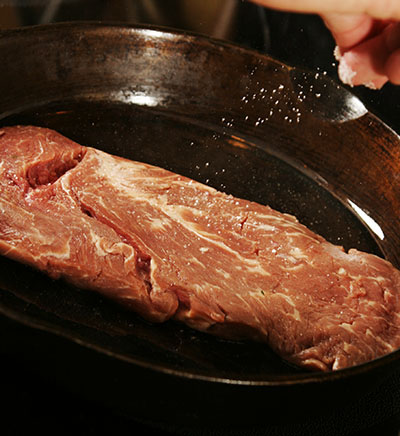
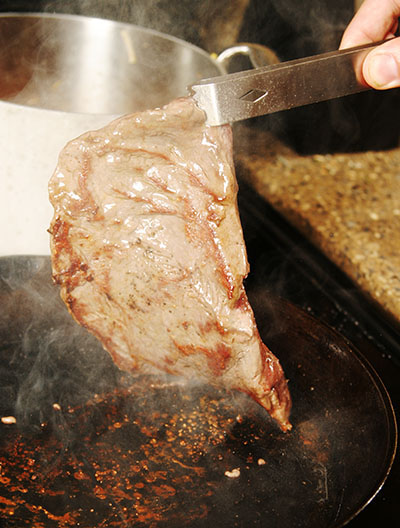
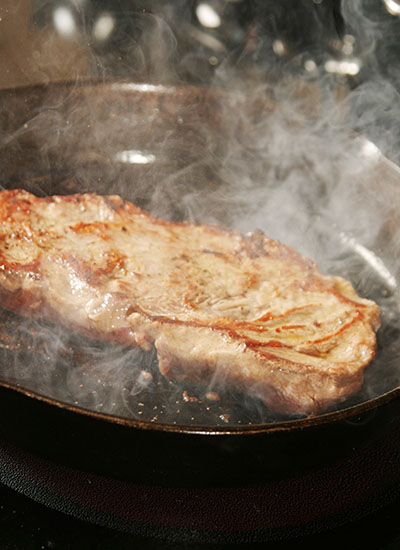
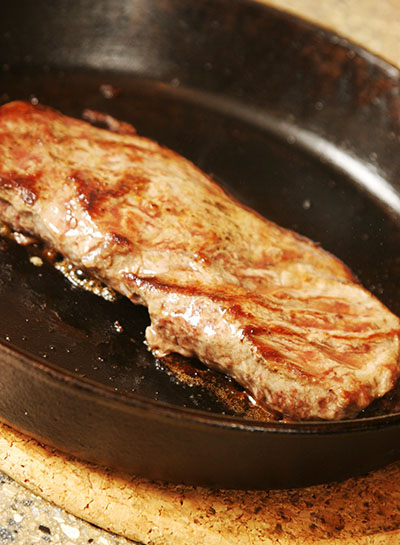
Once out of the oven (maybe 5 minutes cooking time), I let it rest for a couple minutes, then cut in half.
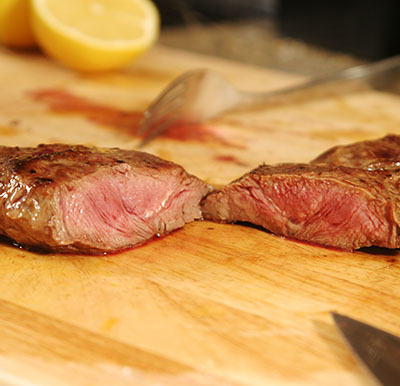
The root vegetables were tender at this point, and the liquid was absorbed, so I squeezed in the juice of a lemon for some brightness, and turned off the heat. Meanwhile, I heated the sauce again over medium. I added a couple tablespoons of butter, and some chopped chives and thyme.
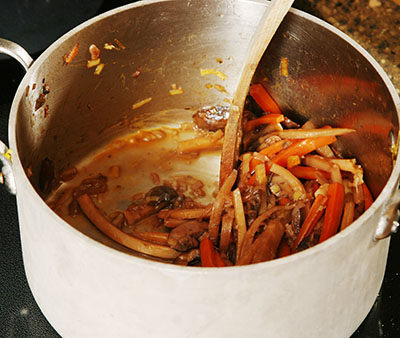



Plating was the root vegetables, with the steak over the top, and bordelaise over the steak and veggies -- and this isn't a gravy. A little bordelaise goes a long way. The flavor concentrations are powerful.

Deconstruction: This was a good one. It almost depleted my stock (so to speak) of demi-glace, and as I mentioned, we'll have to do a demi-glace post soon. When it comes to beef and sauce, there are a handful of steak classics -- béarnaise, bordelaise, herb butter, pan gravy -- and bordelaise is definitely one to try if a suitable demi-glace (or substitute) can be found. The root vegetables, which were almost spur-of-the-moment, were a really good compliment. I loved the earthy sweetness of parsnips, the uber-sweetness of carrots, the slow-braised roasted flavor of the garlic, and the mushrooms which soak up everything. Traditionally, there is some bitter flat-leaf parsley, and I could find any. The chive/thyme mixture worked just as well, in my opinion, giving just enough taste of green to complement the high-tannin of the sauce.



